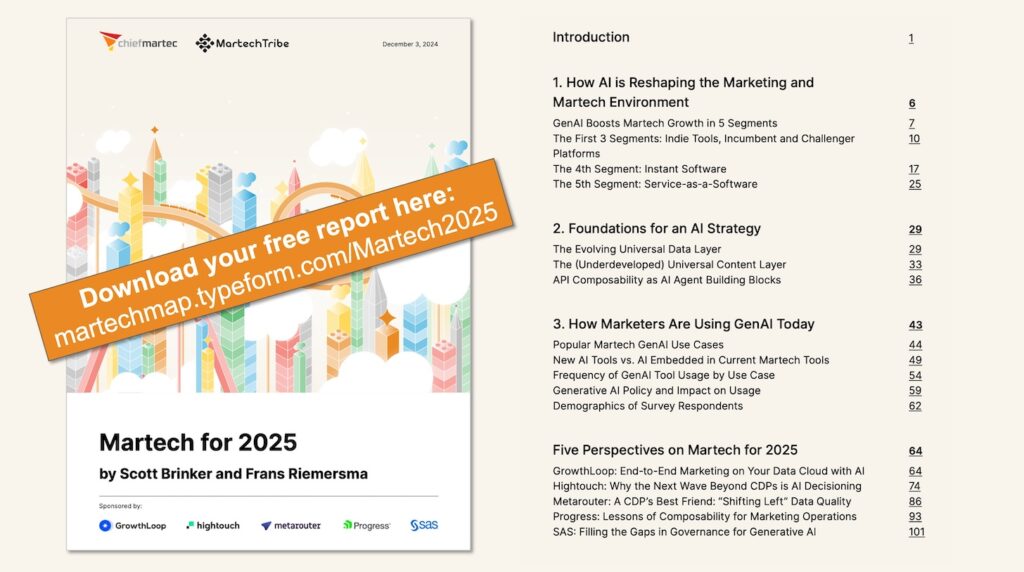
Change is scary. Big, organization-altering, career-shifting change is downright terrifying. While it can be fun to blog about disruptive innovation and creative destruction — commenting as an observer to the end of the world as we know it — actually being caught in the middle of such change is another sensation entirely.
Believe me, I have a lot of empathy for those in the maelstrom. Back in the early 90’s, I ran a bulletin board system (BBS) company that was a leader in its space — until the explosion of the Web wiped out the entire BBS market almost overnight. We were the quintessential last buggy-whip maker. That was no fun.
But ultimately, the Web created an online market that was orders of magnitude larger than the BBS community could have ever dared to imagine. And frankly, had I been a little more open to those changes at the time, I could have capitalized on them as a tremendous new opportunity.
So today, when I see IT departments losing control of technology — and marketing departments having technology thrust upon them — I can appreciate the resistance and frustration they both feel. IT doesn’t want to cede any of their territory to marketing. And marketing would prefer not to take responsibility for it. Both departments would be very happy with that status quo (in a slightly dysfunctional, codependent relationship kind of way).
The only chink in the armor is reality.
Like it or not, marketing has become a technology-driven discipline. As more and more of what marketing is held accountable for depends on the deft selection, configuration, operation, and integration of technology — seamlessly interwoven into the strategy and creative of marketing programs from concept to delivery — it’s simply not effective for marketing to abdicate leadership of that technology to someone else.
But that’s a big change.
It comes simultaneously with other big changes in marketing, particularly the revolution of social media, as well as other big changes in IT, such as cloud computing and software-as-a-service (SaaS). Actually, these tectonic shifts are part of what has triggered the upheaval in marketing technology. But it can feel like a compounding of cataclysmic events to those whose careers are being redefined in the middle of it.
Denial, anger, bargaining, and depression are all valid reactions.
Which is why I fully understand when IT people respond to my advocacy for technology-within-marketing by saying, “no, no, marketing is a stakeholder, but the CIO must control the purchase of all technology to make sure it’s compatible, supportable, maintainable, trainable, optimizable — marketers can’t do that. You’ve got to centralize to achieve integration, standardization, strategic planning.”
All good points, but marketing technologists working within the marketing department are fully capable of handling those requirements — and they can do a better job by combining those technical skills with deep “subject matter expertise” and by following perfectly aligned incentives under the singular leadership of the CMO.
As for centralization, while I agree that there can be terrific synergies achieved by centralizing some technologies, particularly if we centralize certain marketing technologies within the marketing department, I also believe that the increasing motivation for agile marketing and the disposable nature of many software-as-a-service products push back hard on the default assumption that “centralization is good.”
It’s an increasingly distributed world. Just peek at these recent thoughts on the workplace of the future.
Or read Eric D. Brown’s latest post on Building Tomorrow’s Organization — Without Today’s IT, to consider a “what if” scenario that isn’t that far-fetched. It’s actually quite exciting. And this is from a guy who is on IT’s side.
But still, I fully concede, wrestling with these changes is hard.
So I would like to leave you with two thoughts to cheer you up:
First, in the big picture, this is an area of spectacular growth and opportunity. While the shifting of roles and positions and responsibilities is scary, those with strong skills, good business sense, an open mind, and an innovative spirit will find success in this new world. Such success is potentially far greater than under the constraints of the old structure. Don’t fight it. Embrace it. Better yet, lead it.
Second, take heart that such disruptive changes could always be worse: you could be a journalist or a record company executive.



Scott – love reading your posts.
Technology is an integral part to our organization’s strategy – in fact, our “IT Department” is purely an infrastructure play at this point. E-Business is a strategic component of the overall Marketing organization and is a blend of marketing and technology. It’s really becoming difficult to drive innovation in marketing and how we communicate/interact with consumers without knowing the capabilities of technology — both when and when NOT to leverage technology.
The biggest hurdle for marketers is to do what IT functions are typically better at – removing the emotion from the evaluation of technology and not implementing it just because it’s the latest trend. This is probably the one area that Marketing lacks maturity in (from my perspective in our organization, anyway) — the ability to “connect the dots” between all of the technologies and truly understand how they can work together…and if they don’t work well together, have the confidence to say “No” and wait until there is a better opportunity.
Your mention of BBSes brings back memories!
-Eric
Thanks, Eric.
You make an excellent point: marketing is much, much lower down on the maturity curve of technology management. That’s one of the reasons that I believe “marketing technologists” should have an engineering background. They can bring some balance to these decisions — and if they are fully a part of marketing, they have the right incentives and motivation in that balance.
I’m not convinced that marketing should completely remove emotion from their technology decisions — for that matter, I’m not sure that IT has always been as emotionless and rational as popular culture might suggest.
I think a spark of passion and excitement is one of the assets that should be harnessed in marketing technology management. Not unlike when software developers sometimes take on a new, young language — such as Ruby. Rationally, it might not make perfect sense, but the fresh burst of creativity and inspiration often leads to significant new progress.
A tricky balance, to be sure. And in these early days of marketing still getting its sea legs in technology management, there will no doubt be many stumbling blocks. But on the whole, I think it’s going to be a journey well worth making.
Ah, the BBS days. Was just reminiscing about Jack Rickard of Boardwatch Magazine. Now there was a fellow who perfected the art of blog ranting before there ever was a blog. 😉